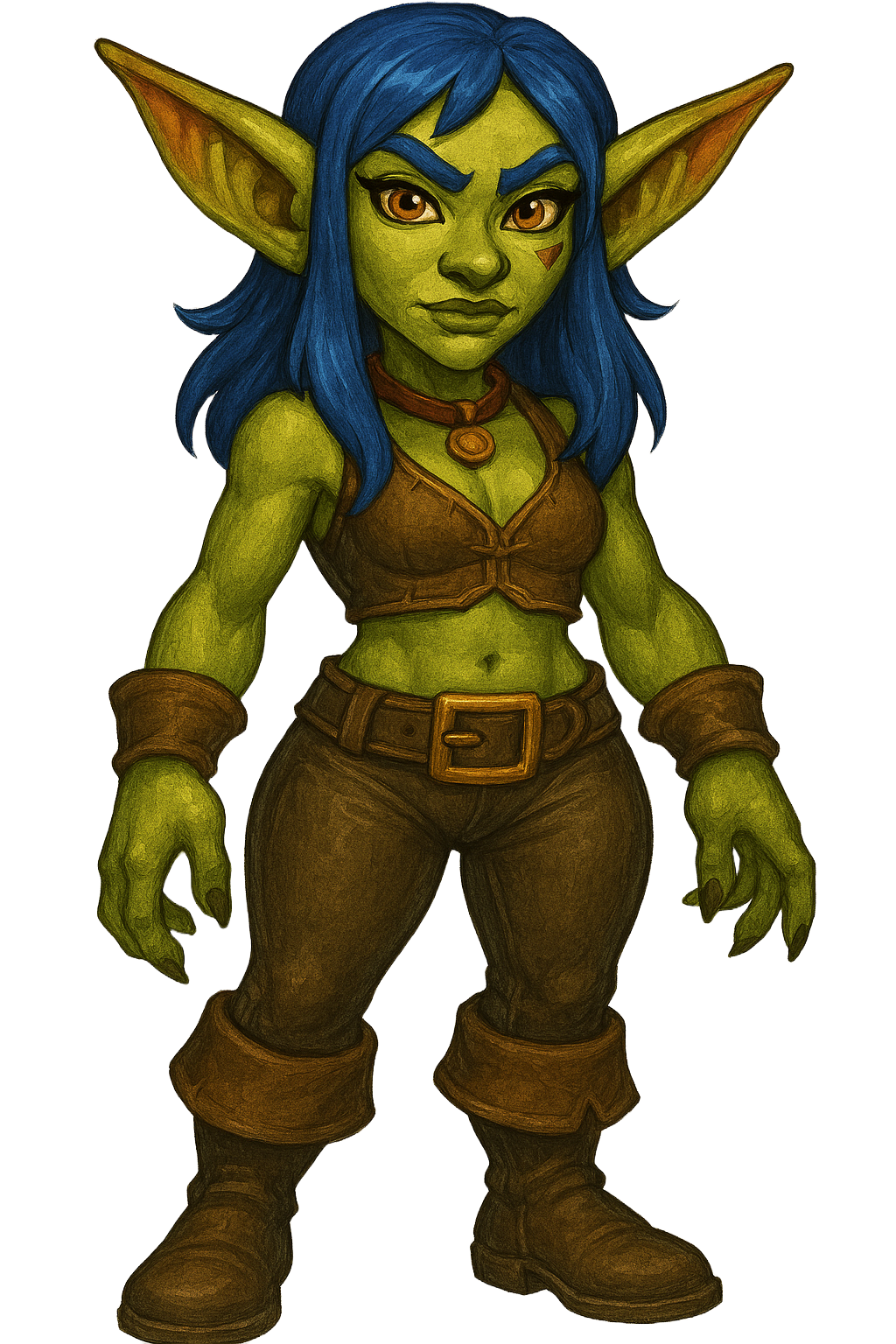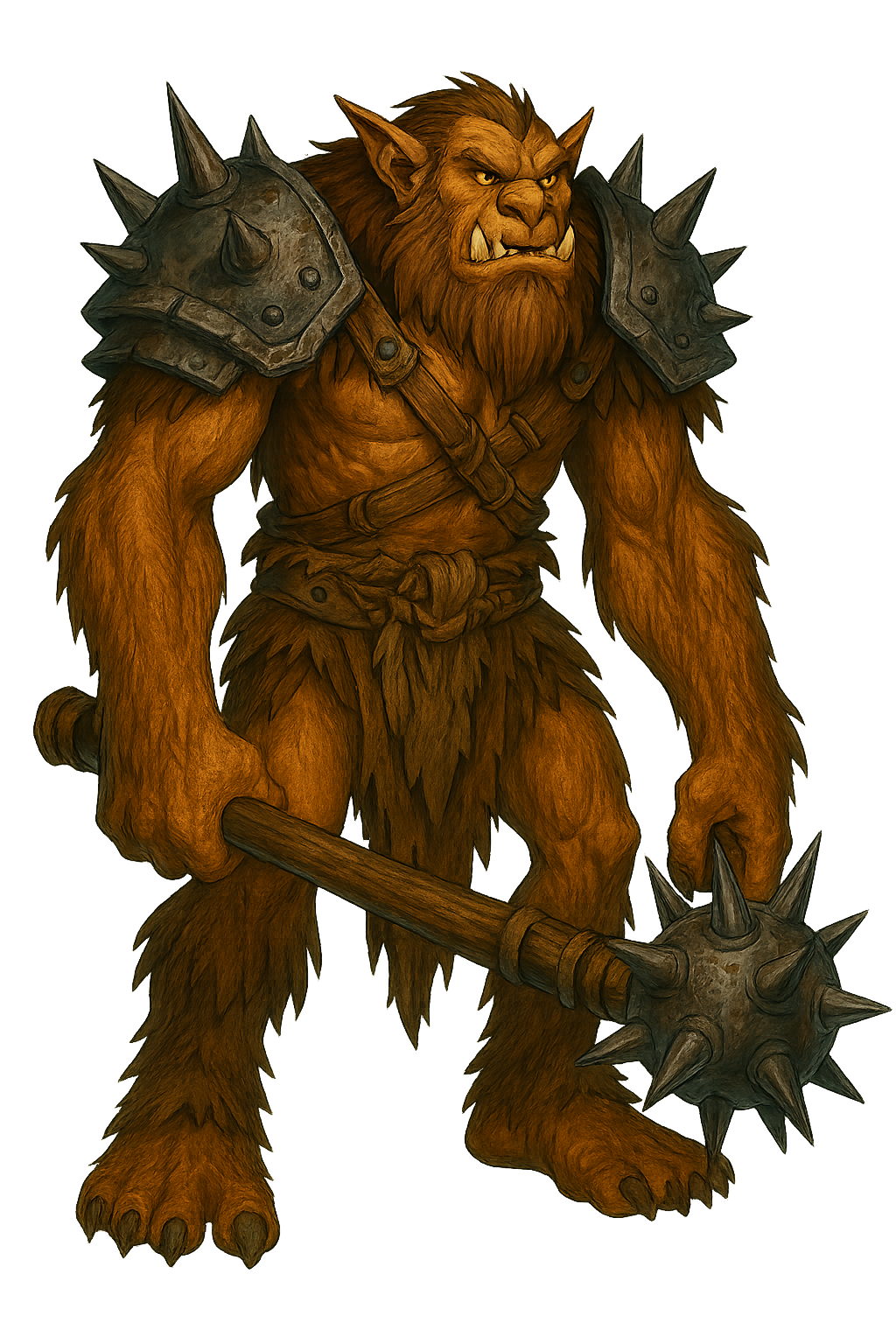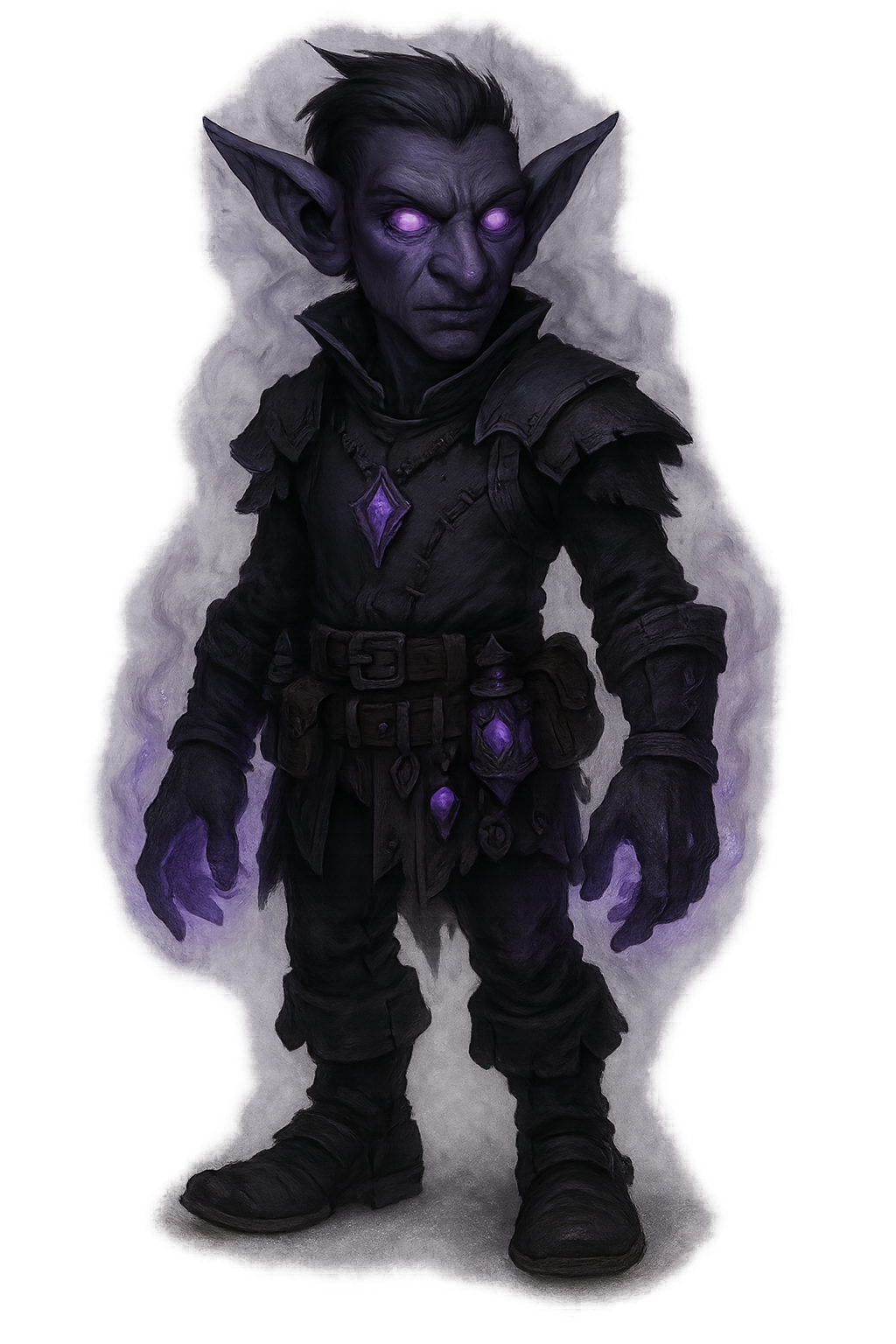Culture
Fermented Food
Contrary to common misconceptions, goblins have a distinct culinary culture that revolves around the art of fermentation and controlled spoilage. While they may reside in modest camps or caves, these spaces are carefully designated for the ideal conditions needed to ferment their beverages and food. Notably skilled with mushrooms, goblins have mastered the cultivation of these fungi, and a carefully prepared assortment of authentic goblin-grown mushrooms can serve as a delectable substitute for an adventurer's ration.
Magic
Goblins see the ability to birth children as an inherently magical ability, so in their culture all 'magical' professions are a woman's job. These include actually magical things like shamanism, witchcraft, and potion making, but also everything else they associate with magic like the ability to read and write, and any medical treatment.
GIfts
Within goblin society, gifting an entertaining gnome is seen as a sign of sophistication, and gnomes quickly became both slaves and prized commodities, traded between tribes.
Characteristics
Physical features
Sexual dimorphism is a distinctive trait observed in goblinoids, with females generally exhibiting a larger and more robust physique compared to males. This divergence in physical characteristics is believed to be linked to the goblinoid species' high reproductive capacity, where the ability of females to bear and nurture offspring played a significant role in their evolutionary development.
Lineages
The lineages and subspecies presented in this article are specific to Toriel, and may differ significantly from those found in Dungeons & Dragons. These lineages reflect the unique cultures, histories, and environments of Toriel.
Players are welcome to use the mechanics of any official or third-party lineage, but are encouraged to reflavor them as one of the lineages native to Toriel to better fit the world’s lore. Talk to your DM to find a narrative fit that works for your character and the setting.
Goblin
Goblins are the most common goblinoids, with a typical green skin, sometimes copper colored in more arid regions. Goblins are the most common.
Bugbear
Bugbear are fierce warriors born for battle and mayhem! Much larger than their goblin cousins, bugbears like to bully and boss other creatures around. Theywill fight for others if their employer promises enough gold and carnage to satisfy their barbaric tastes.However, even a well-paid bugbear is an unreliable ally.
Bugbears are surpisingly stealthy for their size.They are often found in the company of goblins whom they have enslaved or rule over with brutal force. Beneath their fierce exteriors, bugbears are cowards who will abandon wounded members of their parties and flee when the fight turns against them. A wounded bugbear has no qualms about betraying his former allies if it will help save his own hide!
Verdan
Because the verdan have not dwelled long in the world, they are still discovering new things about themselves. Chief among these discoveries is that their physical forms change as they age, signifying that the mutative power of influencing them is not done with them. They soon learned that their kind were fated to eventually undergo a dramatic, painful, and random growth spurt that sees them transformed to hobgoblin size over a period of days.
At the same time, many verdan undergo changes in coloring as they age. Male verdan typically have little to no hair, while females sport shocks of wiry hair that they try to tame in a variety of styles. But the color of any verdan’s hair, skin, and eyes can transform from their original jade tones to pale white, deep ebon, or any other shade in between. A verdan’s ears also undergo numerous spontaneous alterations over their lifetime, from the typical range of point and peak seen among the elves, to huge ears that sweep back from the head like wings, and which are often pierced behind the head with a single ring to keep them from flapping about.
Names
The oldest verdan names spring from goblinoid traditions, but more recent names reflect the character of the different cultures these folk have encountered. Verdan often take halfling-sounding names or gnomish-spunding name. Verdan make no differentiation between male, female, and family names, and often eschew family names altogether.
Verdan Names: Bronn, Crahma, Dolar, Dreeda, Duglee, Gruvald, Hulm, Jeal, Kalo, Klesh, Korm, Lathi, Ovlig, Paracii, Pils, Praet, Promul, Reezni, Rin, Shylk, Slyra, Sollo, Stalsii, Stromvo, Stussa, Syrkart, Takat, Toit, Tubyna, Varr, Veriga, Wraq, Wural, Wurxee
Shadow goblin
Shadow goblins evolved to thrive in the Shadow Realm as servitors and allies of the shadow creatures. These goblins are closer to fey heritage than they are to their monstrous cousins in the mortal lands. They are often blue- or purple-skinned and with bright orange or yellow eyes. And they have a knack for blending into shadows. Good rogues and even better assassins, shadow goblins have a dark reputation but also delight in low humor, drunkenness, roughhousing and wrestling, and other feats of skill (which they often lose).
Shadow goblins are masters of deception and learn from infancy to take advantage of those who would underestimate them. These creatures share the natural resistance shadow creqtuers have to the corrupting influence of the Shadowfell, and they demonstrate a surprising affinity for shadow weaving and lunar magic. Naturally, their knack for magic is something most shadow goblins keep as an advantageous secret.
Names
Individual names among the shadow goblins tend to be suggestive of either darkness or whimsy—or better yet, both—as those two facets play such important roles in their day-to-day lives. Many actually feel it a personal flaw to share a given name with anyone else, so they take great pains to name their children something entirely unique. Family names tend to focus much more on utility, another important facet to shadow goblins’ lives, and are much more descriptive.
Example Male Names: Bollair, Bruddaq, Desolay, Dessoto, Falko, Farsight, Fringo, Messerino, Picklo, Stinko, Thundero, Twisp.
Example Female Names: Daniy, Jojoni, Lunara, Morrameko, Nona, Olara, Omagda, Pippi, Sihaddra, Tippita, Vellissa.
Example Family Names: Bellringer, Butcherson, Candlesmith, Cloudchaser, Cooperson, Foxskinner, Glimmerfetch, Goldbiter, Ironbeater, Marshhound, Moonshine, Netmender, Potlicker, Potmaker, Seasalt, Shepherdsdottir, Skullsniffer, Tailshipper, Wargbender, Weaselwise, Weaverson.
Faevlin
Faevlins are what happen when a group of goblins makes deals with the fey that they can’t keep. In poor lighting, a faevlin can be mistaken for a goblin. However, faevlins are unmistakable in the light. They have teal skin, and a faevlin’s head is upside down. Faevlins work for stronger fey or guard places where the veil between the mortal world and the land of fairies is weak.
History
Enslavement and rage
During the War of the Ancients, the demon lords recognized the goblinoids as potential slaves and warriors to bolster their ranks. However, the bugbears vehemently resisted this enslavement. In response, the demons devised a malevolent disease, a Rage, which continues to afflict the bugbear population to this day. This affliction grants them increased strength and resilience, but it also drives them towards primal and destructive instincts.
As a consequence of this disease, the goblins were coerced into servitude as minions for the demons, toiling under their oppressive rule to manufacture weapons and armor for the demonic legions. However, it was in the final stages of the war, mere years before its culmination, that the goblins managed to orchestrate a successful rebellion. Their uprising plunged the demon ranks into disarray, creating a window of opportunity for the allied forces to launch a decisive counterattack.
Entertaining gnomes
Shortly after their creation, the gnomes faced adversity from the denizens of the Feydark. Among these creatures, goblins were particularly cruel, often capturing gnomes for their amusement. Within goblin society, gifting an entertaining gnome was seen as a sign of sophistication, and gnomes quickly became both slaves and prized commodities, traded between tribes.
Fey Pact
Faevlins, goblins who dared to break a pact with the fey, now bear the burden of their treachery with upside-down heads and bodies tinted in a peculiar shade of mint green. During a tumultuous era of conflict, the goblins cunningly offered their aid to the summer court in exchange for newfound power. However, when they thought themselves unobserved, they callously reneged on their agreement, foolishly believing they could escape the consequences. Fate took a twisted turn when the battle shifted, pitting the goblins against the hags alone. Seizing the opportunity, the cunning hags offered a tantalizing proposition, fully aware that the goblins' betrayal would invoke a curse, effectively severing their ties with the summer court. Tempted by the hags' promises, the goblins succumbed to their deceit, unaware of the dire consequences that awaited them. As a result, they find themselves cursed and banished from the fey realm, forced to dwell once again in the material plane.
This upheaval granted the gnomes an opportunity to escape and secure their freedom. Seeking refuge, the gnomes fled to the Winter Court, where they were offered sanctuary in the cold, enigmatic lands under its protection.
Verdans
The goblin, known as the highly adapting monsters they are, drifted from the Green earth at the end of the era of dragons, settling toward the east of the soon-to-be Lightfoot land. Settling on the side of the eastern lake, they achieved the peaceful life they were looking for. When the gnomes and halfling united they joined the union.
But over the years, the Goblin changed, mutating at an incredible path, even for a goblin. By the time they joined the union with the gnome and halfling, their skin was turned the color of jade and their blood began to flow black. Soon after, their ears grew pointed, and they gained a limited form of telepathy. Some think such event did occur due to the influence and powers of local dryads
Without a cultural identity or memory of their own, the verdan quickly adopted the cultural practices of gnomes and halfling.
Notable members









Comments